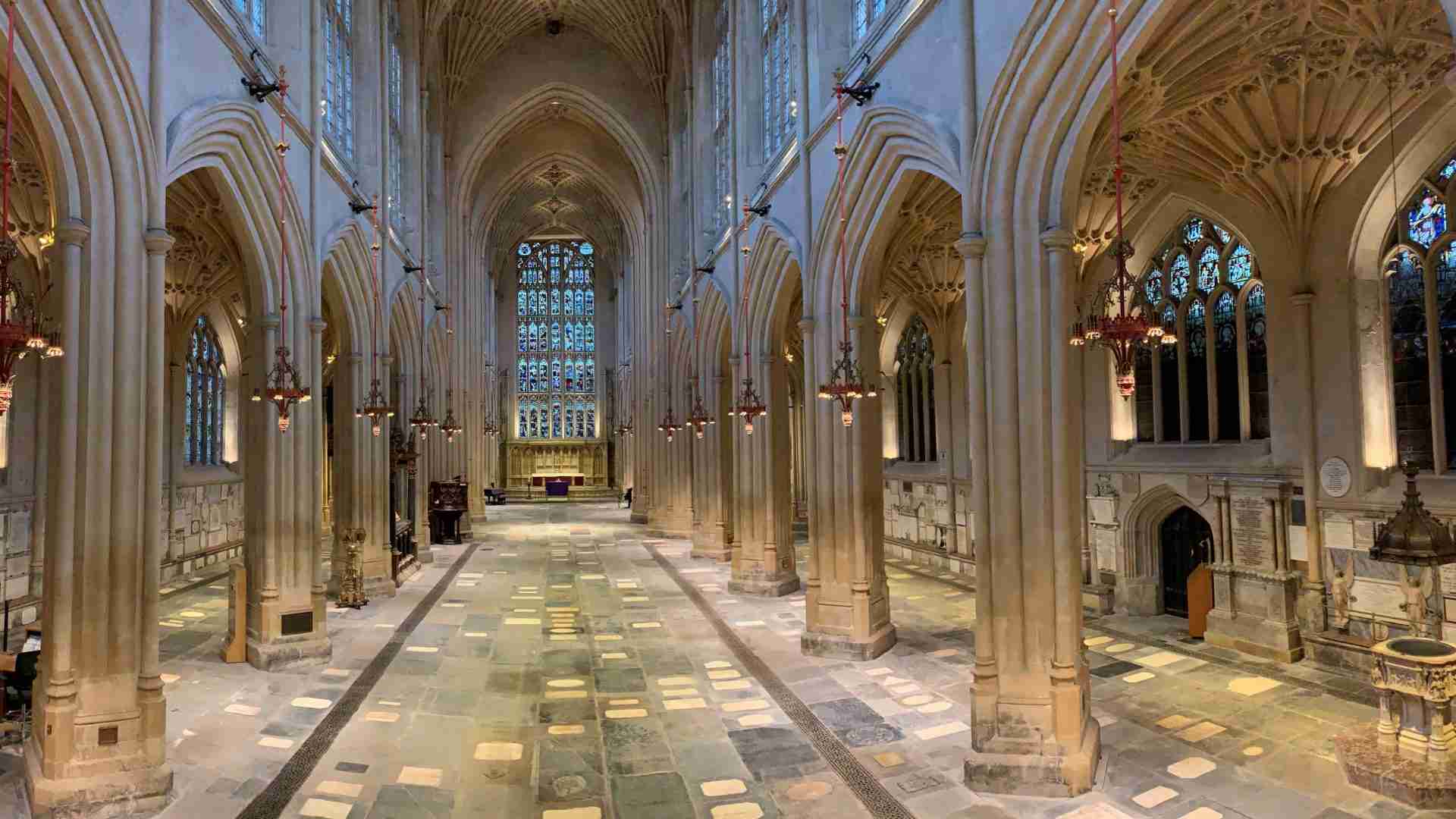Bath Abbey’s innovative eco-heating system powered by sustainable energy from Bath’s famous hot spring waters is being switched on this week (w/c 8 March 2021)
As part of the Abbey’s Footprint project, a new distribution of underfloor heating pipework has been laid in the Abbey and a plant room dedicated to the associated mechanical and electrical equipment had been fitted by a team of contractors that includes Emery, Wheelers and isoenergy last month. All that was left to do was the trickiest part of the works, down in the Roman Drain.
Renewable energy firm, isoenergy, has just finished installing a world’s-first heat collection system in the Roman Drain beneath York Street, Bath – the final piece in the puzzle to get the Abbey’s new eco-heating system working. The work down in the Roman Drain involved installing ten custom-built EnergyBlade heat exchangers that will collect heat from the thermal spring water that flows through the drain from the Roman Baths and down into the river. Every day there is around 1.1 million litres of hot water flowing through the drain which stays a constant 40°C all year round. Energy will be extracted from this water to produce enough energy to heat the historic Abbey as well as the adjacent row of Georgian cottages (Kingston Buildings) that house the Abbey offices, Song School and volunteer facilities.
Edward Levien, Commercial Director at Isoenergy, said: “We’re very proud of our work on this heat pump project, understood to be the first of its kind, which will source its energy from Bath’s world-famous hot springs. Working in the Roman Drain’s humid and confined environment brought a new set of challenges for our engineers. We had to do the work in short 20-minute sections as that is as long as a person can safely and effectively work down there. What’s more, we could only get all the equipment down into the drain through a manhole inspection cover on York Street, and it all then had to be lowered the ~7m to the floor of the Great Drain.
“However, these are all minor inconveniences when we consider this remarkable achievement - we’re very proud of our team and how hard they’ve worked to deliver this system that’ll enable the Abbey to be heated with sustainable and low-carbon energy for generations to come.”
Canon Guy Bridgewater, Rector of Bath Abbey, said: “We’re very grateful to everyone involved in making this eco-friendly dream a reality. So many people have played a vital role, not least B&NES Council who by granting us the lease of rights to these waters, have enabled us to achieve a sustainable solution for heating our beautiful historic church. Previously the Abbey heating system, which dates back to the Victorian era, was energy inefficient and expensive to maintain; but now instead we’re able to harness this previously unused natural resource. One of the Abbey’s guiding purposes is to help treasure, sustain and renew God’s creation; and I rejoice that by working together with the many funding, design and engineering partners involved in our Footprint project, we can wonderfully reduce our carbon footprint and become more responsible stewards of the planet’s resources.”
Bath Abbey’s Footprint project is a £19.3 million programme of work, supported by the National Lottery Heritage Fund, that will provide new spaces for learning, music and interpretation, better visitor facilities, undertake essential conservation work, as well as opportunities for volunteer and community involvement. It will secure the Abbey’s physical future and improve its hospitality, worship and service to the city. More information can be found on our website: www.bathabbey.org.

